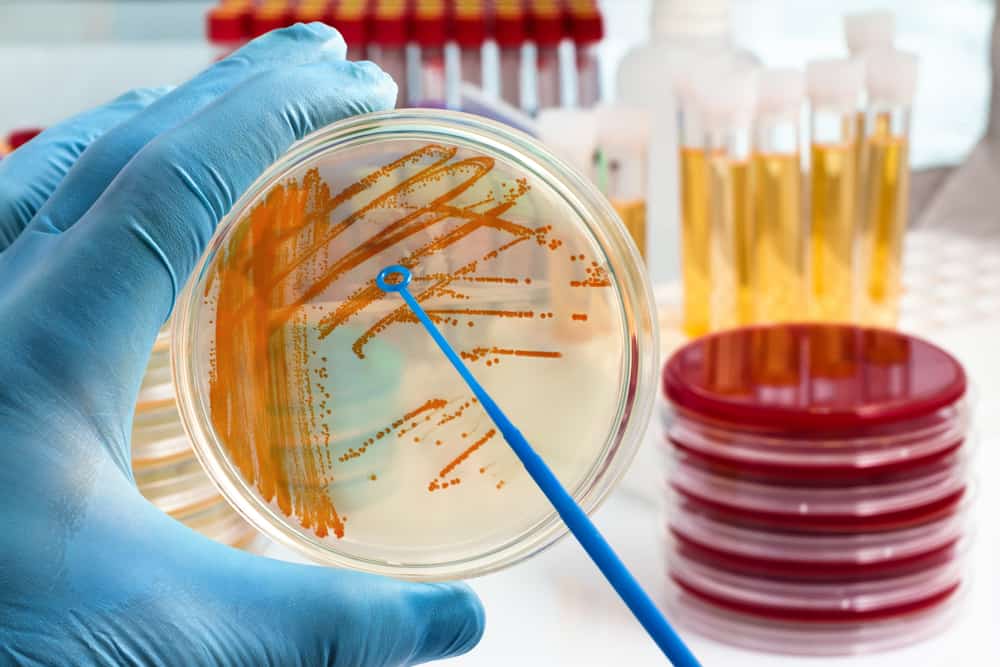Contents:
- Medical Video: Examples Of Bacteria And Diseases Associated With Biofilm Development
- Infection of group A Streptococcus bacteria
- Infection of group B Streptococcus bacteria
- Infection in pregnancy
- Infection in newborns
- Infection of group C and G streptococcus bacteria
Medical Video: Examples Of Bacteria And Diseases Associated With Biofilm Development
Streptococcus (abbreviated as strep) is a type of gram-positive bacteria found on various environmental surfaces so it is very easy to attack anyone. Streptococcus bacteria also have various types and ways to infect humans. Starting from touch, open wounds, air, and body fluids, to transmission that occurs during the process of childbirth.
Streptococcus bacterial infections can also occur in various organs of the body, both from the respiratory system and digestion to the blood vessel and heart systems.
Streptococcus infections can be divided into groups A, B, C and G. Each has its own characteristics related to the ability to cause infection.
Infection of group A Streptococcus bacteria
Group A streptococcus (strep A) is found on the surface of the skin, inside the throat, and in various body cavities. Including the ear and genital cavity. Strep A infection can occur in anyone, especially in adults and children.
Strep A can spread through water particles when people infected with strep cough or sneeze. These bacteria can also survive on the surface of certain objects so that they can be transmitted through touch.
Strep A infection can be mild or invasive. Mild infections from strep A include:
- Inflammation of the tonsils or inflammation of the throat which is characterized by pain when swallowing and swelling of the gland.
- Impetigo skin infection characterized by pain and a lump filled with fluid (blister) on the outermost part of the skin.
- Cellulitis, which is an inner skin infection characterized by red skin swelling and accompanied by pain and a heat sensation. A sellulitis infection can spread and move to the upper skin.
- Sinusitis is an infection of the small cavity around the forehead and cheekbones which causes nasal congestion and pain in the face.
- Ear infections, especially in the air cavity to the inner ear.
- Scarlet fever, which is a bacterial infection that causes a rash and rough feeling on the surface of the skin.
Basically, strep A infection can easily occur when a person experiences a decrease in endurance. Minor infections of strep A can be easily cured without complications and long-term effects.
However, if someone has a very weak immune system such as in infants, the elderly, people with diabetes, or cancer patients and HIVmore invasive strep A infection is more likely. For example the following diseases.
- Pneumonia, which is a lung infection characterized by a cough that does not heal, shortness of breath and pain in the chest.
- Sepsis, that is circulatory infections which can cause heart problems, fever, and hunting breath.
- Meningitis is an infection of the streptococcal bacteria that has reached the lining of the brain. This disease is characterized by headaches, vomiting, stiff neck, and rash.
- Toxic shock syndrome (TSS), ie the appearance of shock symptoms such as dizziness, nausea, diarrhea and fainting due to strep germs A secretes toxins in the bloodstream.
- Necrotising fasciitis is an infection of the inner skin and area adjacent to the muscle (fascia) which causes pain, swelling and redness. This infection can spread quickly.
Invasive strap infection is a serious disease that needs proper treatment. In serious circumstances, one in four people who experience invasive strep A can die.
Infection of group B Streptococcus bacteria
The infection of group B Streptococcus bacteria (strep B) is generally not too dangerous. But it can cause health problems in groups with a vulnerable immune system.
Strep B is found in the digestive tract and in the vagina. Strep B infection is rare and is usually dangerous to the condition of pregnancy and to newborns.
Infection in pregnancy
Strep B is a common bacterium that is in the body, allowing transmission to the baby during pregnancy. Nonetheless, the risk of infection tends to be small where only 1 in 2,000 cases of exposure to the uterus causes strep B infection in infants.
Strep B infection in pregnancy can cause miscarriage and stillbirth, but this is very rare.
Infection in newborns
Because newborns have very weak endurance, exposure to strep B can easily cause serious infections such as meningitis and pneumonia. Symptoms of strep B infection can be fever, cannot breastfeed, vomit, and lose consciousness.
The long-term risk of infection can cause the baby to grow with sensory disorders and brain function disorders such as difficulty thinking and concentrating.
In prevention, it is necessary to know the risk factors such as a history of strep B infection in pregnant women and prevention of diseases with the use of antibiotics during the delivery process.
Infection of group C and G streptococcus bacteria
Group C and G streptococcus (strep C and G) have a close relationship with strep A. However, the mode of transmission is different. Strep C and G are generally found in animals and spread through touch or raw food. For example raw meat and milk are exposed to these bacteria.
Strep bacteria C and G can also live on the surface of the skin, especially on damaged skin such as experiencing eczema and other mucosal tissues such as the vagina and intestinal tract.
Strep bacteria C and G cannot last long in the open environment outside the human and animal bodies. Strep C and G infections generally attack the circulatory and musculoskeletal systems such as bacteremia, bone infection, endocarditis, joint infections, and toxic shock syndrome.












